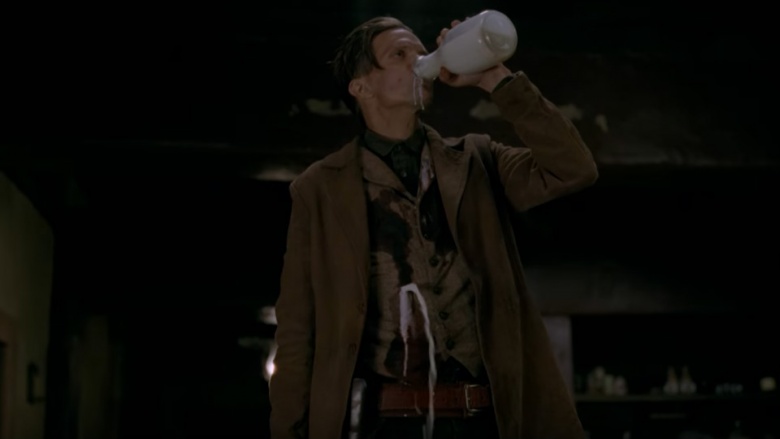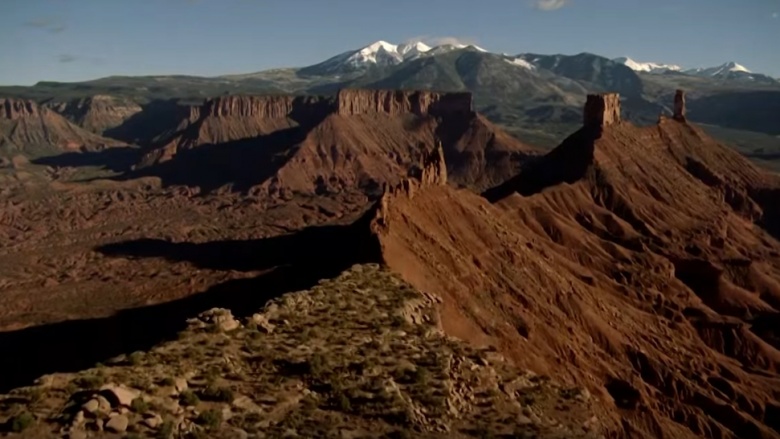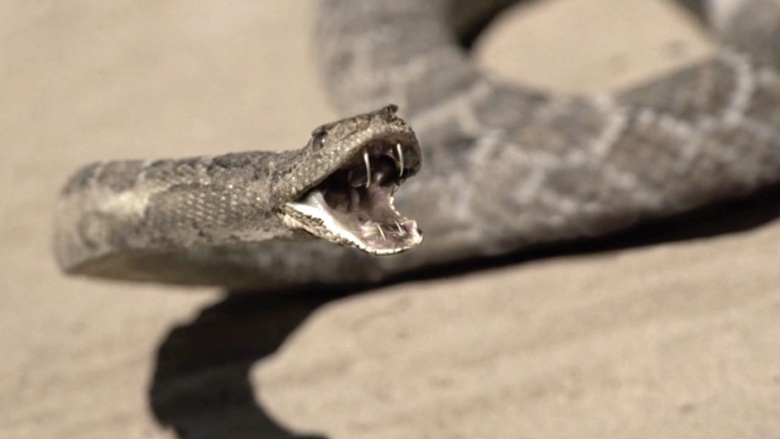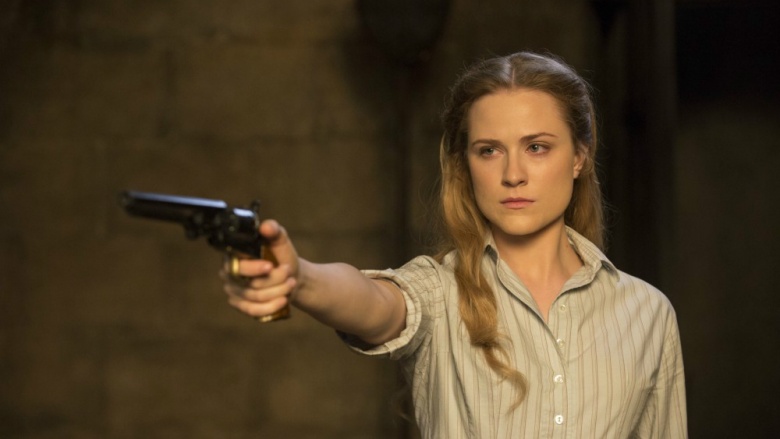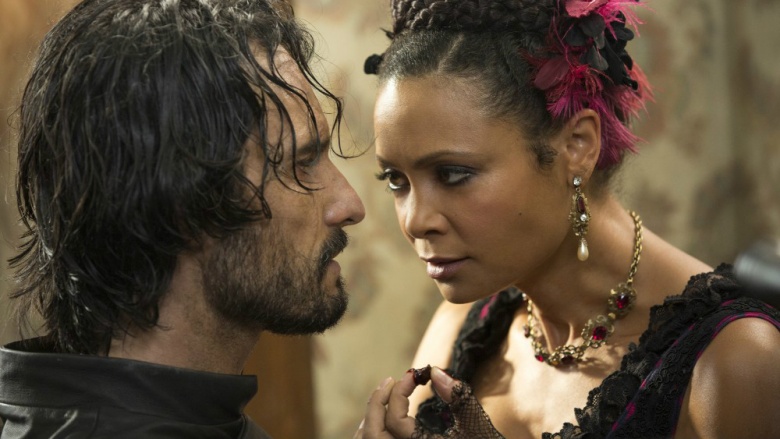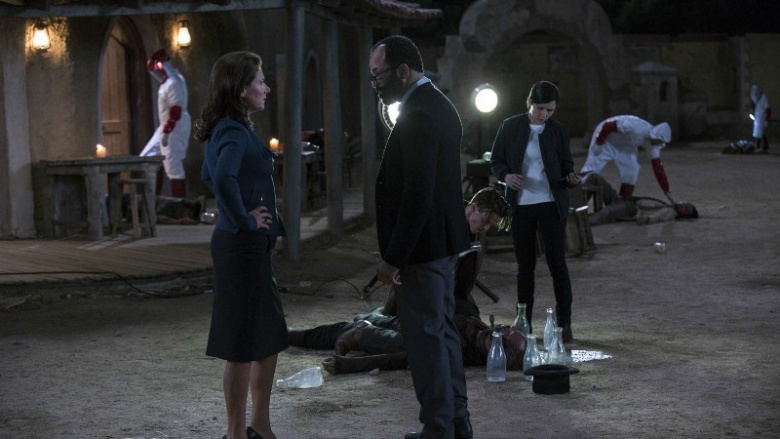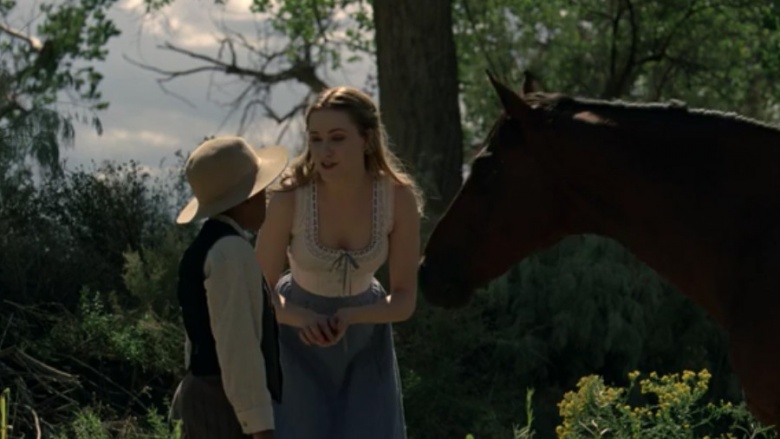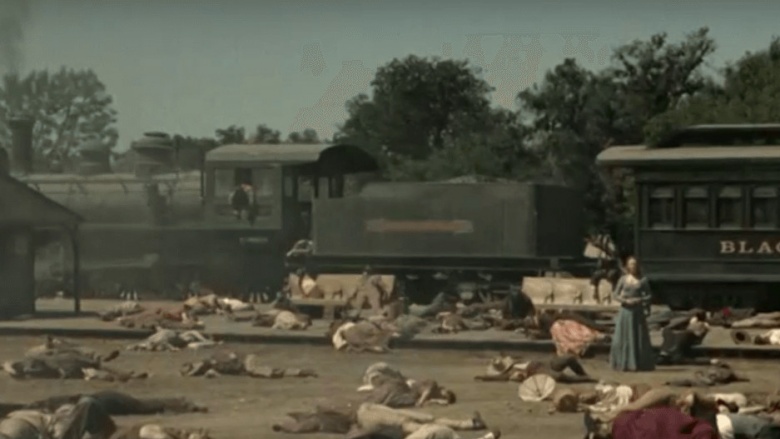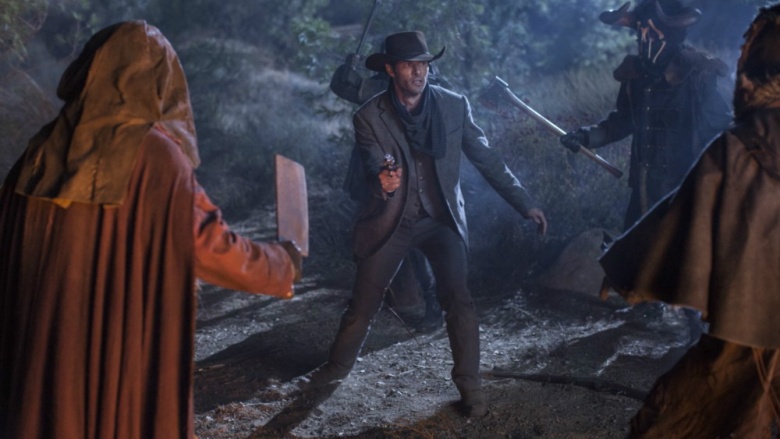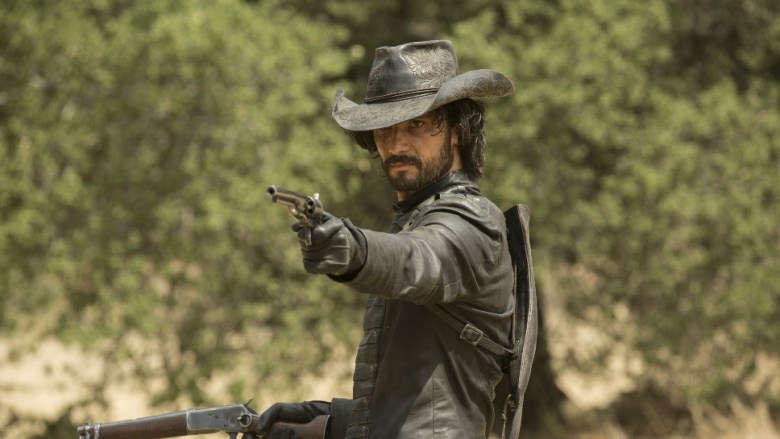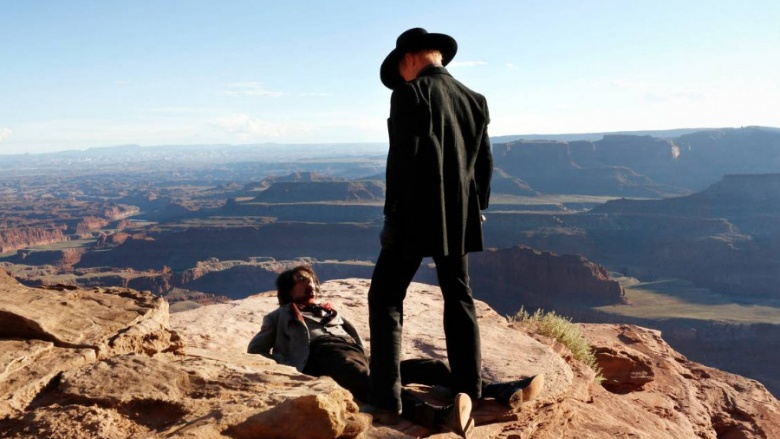Dumbest Things In Westworld No One Is Talking About
The acclaimed first season of the half-period Western, half-sleek science fiction Westworld was one of the biggest television events in a long time. Part of Westworld's intrigue is how it gives you just enough clues to deepen the mysteries interwoven through this futuristic theme park, though we do wonder how many of those clues are intentional, and how many just got dropped in the middle of things and then forgotten about. After all, J.J. Abrams produced it, and we all remember Lost.
Is Westworld fated to be riddled with the same plot holes and inconsistencies? We already have a ton of unanswered questions. Maybe some of them will be cleared up in the second season, but maybe not.
The milk man
In the very first episode, we see one of the park's hosts, Walter, seemingly lose his mind and go on a rampage, killing other hosts. It's later revealed that he's been affected by Robert Ford's new "reveries," which apparently cause hosts to remember their past lives in the park. This particular host decides to hunt down all the hosts that have killed him in past narratives that he's been a part of.
All of that makes sense. What doesn't make sense is the milk streaming out of his bullet holes when he takes a giant swig after shooting everybody. Yeah, maybe it's the show's way of telling us this guy's a host and not a real human, but that's literally the only time a robot's wounds have acted that way. Are we supposed to believe the hosts have a giant empty sac in their torsos where all their food goes? Pop it and they leak like a water balloon? So why doesn't Teddy Flood sploosh out whiskey when he gets Swiss-cheesed at the bar?
To add insult to injury, in the same episode, Walter the Milk Man later gets killed at the Abernathy Ranch — still drinking milk, mind you — and bleeds like any normal near-sentient robot would.
The weather makes no sense
Maybe the staff meteorologist at Westworld turned in the year's forecast and then went on vacation because the weather's always sunny with a chance of robot uprising. Granted, the show takes place in the desert, but nobody involved seems too interested in portraying any other type of weather or even acknowledging that deserts are periodically hit by massive supercells that utterly engulf the sky, especially in mountainous regions like Westworld's locale.
But there's been no interest in even addressing what's happening in the sky. No days are particularly sweltering, and the nights aren't freezing. There's really only been one hint that any other type of weather is possible in Westworld, and it didn't even come from the show itself — it's buried away on the website as a joke. In the faux terms and conditions on the site DiscoverWestworld.com, we get a passage explaining that Westworld "shall not have a liability to you by reason of any delay" caused by an "act of God, storm, fire ..." and so on. So clearly, storms are possible — they just don't happen. Hey, if Disney World could guarantee sun every day of the year, you better believe you'd never see a cloud over Cinderella Castle.
What's the deal with the animals?
Westworld makes it pretty clear that horses are manufactured for the park in the same manner as the hosts. In the episode "Chestnut," Robert Ford comes across a rattlesnake in the desert and controls even that with a gesture. We get the point: All the animals in Westworld are robots. The website even backs this up: "All livestock within the Delos parks are Hosts, with the notable exception of flies."
Cool, so ... wait, all the animals? What about the other insects, like the crickets you can plainly hear every time Dolores comes home to the ranch at night? Are those crickets robots, even though the flies aren't? What about the lizards or the birds? And how many rattlesnakes are there? If the park is as big as it appears, there must be thousands of the little, world-building critters, which means that each one has to be serviced when it dies, which means that someone has to put on a hazmat suit just to go topside and pick up a gecko that accidentally got stepped on.
Westworld is a completely isolated world shut off from invasive species. But we know the flies got there somehow, so other things must have, too. Surely the flies weren't added solely to make TV viewers squirm when they crawl on someone's eyeball ... or actually ... that's pretty believable.
Loop resets?
All the hosts in Westworld are on a narrative loop. Dolores wakes up each morning and rides into town. There, she drops a can of condensed milk and someone usually picks it up for her. If it's Teddy, they frolic around all day and show up at Dolores' house in time for her parents to get murdered that night. Sometimes, she gets murdered, too. The next day, her loop resets and she does it all again.
In the interim, the dead hosts have to be taken care of. The DiscoverWestworld website explains that when hosts "die" in the park, their bodies are buried in special graves. Under these graves is a chute that drops the host's body off in the Intake department so techs can fix up all the holes and stab wounds. What the website doesn't explain is how often this happens. Stays at the park last a minimum of one week, a maximum of four. Ostensibly, there could be guests still adventuring in the park while three more loads of newcomers arrive on the train in Sweetwater each Sunday.
Dolores wakes up, lives, and dies roughly every day, as does Teddy. Does that mean that a guest could kill Teddy one day, and then find him alive and well the next day? That's not a big deal with chivalrous Teddy, maybe, but it could be with one of the bigger baddies, like Hector Escaton. Yet, the show continually glosses over this small-but-important detail.
Wait, MRSA?
In"The Original," Robert Ford says, "We can cure any disease, keep even the weakest of us alive." It's a cool segue up to his main point in that speech, which is to imply that humans are at their evolutionary apex. But then, in the next episode, our favorite prostitute Maeve comes down with a MRSA infection from one of the "dirty" guests.
MRSA is a bacterial infection related to staph that usually infects people via cuts in their skin. But didn't Ford just say they can cure any disease in this world? So why are people still walking around with MRSA? It's not like MRSA is the common cold, either. It's one of those infections that, given the ability, we'd probably get rid of quickly. MRSA has been known to put people in comas at best, and kill them at worst. According to USA Today, MRSA kills up to 20,000 people every year. So if humans really are the best they can be, as Ford thinks, and can cure any disease, how is such a deadly pathogen still going around?
The hazmat suits
Of course, diseases like MRSA (assuming there are diseases) could be why people wear those hazmat suits when they go to the surface. Either that, or Westworld is actually on a different planet with toxic air, as some theorists think, and the guests are all uploaded into hosts that look like them.
Or ... maybe not, considering that in "The Original," Bernard (Jeffrey Wright) and Elsie (Shannon Woodward) are strolling around side-by-side with the hazmat folk in Las Mudas. So maybe the suits keep the workers from contracting diseases from the dead bodies? Well, they're not really dead — they're hosts who are just acting dead. And besides, Elsie has no problem getting up close and personal with the bodies. It's possible that this is one of those things that will be explained more fully in future seasons, but right now, it doesn't make any sense whatsoever.
What do the kids do?
Returning to"The Original" again, there's a scene where Dolores heads down to the river to paint horses. She's interrupted by a family with a young boy, and just before the family enters the frame, you can hear the dad saying, "I don't think we're supposed to cross the river. It's too adult for Jacob," referring to their young son.
That's ... an interesting thing to say, considering that most guests arrive for their stay in Sweetwater, where extremely lifelike androids are regularly gunned down in the street, prostitutes hang out on front porches, and the F-word is casually dropped like leftover orange Skittles. "Across the river" is presumably where Pariah is located, a place described on the website as "a gateway to ultimate danger and sin in Westworld." And as we see later on, it's a pretty bad place.
But from a kid's perspective, the distinction between Pariah and the rest of Westworld feels like comparing Westworld to Game of Thrones — they both have sex, violence, and violent sex, but one just happens to have a little more than the other. The real question is: why would anyone bring their kids to Westworld in the first place? How many psychiatrist appointments will it take to get rid of Timmy's nightmares because you accidentally stumbled across all the rotting corpses left by Wyatt's gang on your family vacation?
What happens if one guy goes crazy?
Let's say you just arrived at Westworld for a bit of the ol' good-time cowboy ultraviolence. You're fresh off the locomotive, spats polished and cravat fluffed, and you're looking to really experience everything this park has to offer. Maybe shoot some bandits and throw a bone to the lovely ladies, or explore the hillsides in search of buried loot.
It's one of those hot, deserty kinds of days, so you stop in Sweetwater for a cold one. An old prospector stumbles up and begins spinning a yarn about a crate of old robbers' gold hidden just beyond the pass, where two cacti grow in the shape of a coyote's backbone. Your eyes gleam. Yes. This is what you came for. This is why you're spending $40,000 a day (or more) to play dress-up with robots. The old prospector starts leading you out the door ... and suddenly, some CEO runs through the door, guns down every host in the saloon, and saws off their limbs, because man, was it a bad week at the office. Your prospector buddy gasps once, and then dies in a pool of his own blood. Bummer.
What now? Does the park have a backup grizzled prospector to help you find the gold? Or is that plan just down the crapper until the hosts' timelines get reset? What if the crazy CEO kills everyone in Sweetwater and ruins all the adventures for everybody for the day? If the park is filled with closet psychos who get a kick out of killing, surely incidents like that must happen on a regular basis. The other guests are paying too, dammit!
Do guests kill other guests?
Speaking of closet psychos, why don't any of the guests kill other guests? "The bullets!" you scream. "They're programmed to only kill hosts!" Even showrunner Jonathan Nolan has explained this in interviews. The guns are designed to slow down the bullet velocity when aimed at a real human. The result is a bruise, like a paintball, when a person is shot.
Sure, but the knives are real. The axes are real. The cliffs are real. Couldn't a rich despot bored of the constant robot bloodshed drunkenly bludgeon another guest straight into Deathworld? Maybe it's because we're only seeing Westworld through the lens of the show, but most of the guests seem seriously unhinged. Logan nailed a host's hand to the table with a steak knife because the man wouldn't walk away. The Man in Black scalps just about every host he comes across with the world's biggest Bowie knife. And no one has turned one of these weapons on another guest? It's a little hard to believe.
What if you get shot in the eye?
Intentional slaughter aside, accidents are bound to happen in a place like Westworld. For example, there's always the possibility of getting shot in the face, yet nobody ever brings this up. Every time the Man in Black is caught in a hail of bullets, you see them puff harmlessly into his chest. At first, it seems like the bullets don't do any damage, although we learned the truth in "Chestnut," when William (Jimmi Simpson) gets pegged by a bandit. He flies to the ground from the bullet's impact, then ogles the painful bruise it left on his shoulder.
But what if he'd been shot in the nose, or the teeth? Or the eye? An impact strong enough to throw a man backward, to the eyeball, could definitely kill someone. Jonathan Nolan said that Westworld's bullet concept is based on simunition, which is real-life non-lethal ammo used for police and military training. According to this marketing sheet for simunition, the real ones shoot at 300-490 feet per second. That's faster than a paintball, and a paintball to the face can do some serious damage.
We have no reason to assume that the simunition we know and the ammo used in Westworld is even remotely similar. If anything, it's worse — when Maeve digs a bullet out of her side in the episode "Dissonance Theory," we see that the bullets are certainly real enough. Even if the bullet's velocity is slowed down considerably, it's clearly strong enough to leave a bruise, and anything that strong could straight up explode an eyeball, robot or not.
How does a robot bleed to death?
The big money question so far seems to be, what are these robots actually made of? They die when they get shot, but that could be a line of programming that tells them to act dead when they get "killed." Maeve gets a staph infection, something that only affects biological creatures. The reasonable answer there is that the hosts are at least partly biological. Then Maeve slices herself open to pull out a bullet (more accurately, to let Hector pull out a bullet), and everything in there looks like normal gooey skin-organs-blood stuff.
In other words, they're pretty realistic, and plenty of people have brought up all those points. But there's one detail that still doesn't make sense, and it's way back in Episode 1. In this episode, the Man in Black takes Kissy (the guy with the map in his skull) up to the mountains and drains out most of his blood. Then he says, "About three liters. That's how much blood I left in you. You lose more than that, you die."
That line chucks out all the other logic about how the robots operate, and hammers the question home again: What the toss are these robots made of? If there's enough blood in them to make the hosts act the way humans would after heavy blood loss, then their entire internal structure should closely mirror that of humans. In fact, they seem to be built exactly like humans. Well, except for the anomaly that is Walter the Milk Man.

